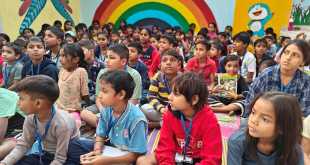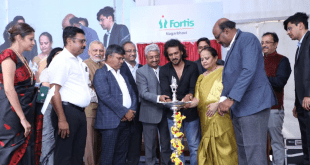23 March 2023
Situation at a glance
The increase in the incidence and geographical distribution of arboviral diseases, including chikungunya and dengue, is a major public health problem in the Region of the Americas (1). Dengue accounts for the largest number of cases in the Region, with epidemics occurring every three to five years. Although dengue and chikungunya are endemic in most countries of Central America, South America, and the Caribbean, in the current summer season, increased transmission and expansion of chikungunya cases have been observed beyond historical areas of transmission. Furthermore, 2023 is showing intense dengue transmission. In addition, higher transmission rates are expected in the coming months in the southern hemisphere, due to weather conditions favourable for the proliferation of mosquitoes.
There have been 2.8 million dengue cases reported in the Americas in 2022, which represents over a two-fold increase when compared to the 1.2 million cases reported in 2021. The same increasing trend has been observed for chikungunya, with a high incidence of meningoencephalitis possibly associated to chikungunya reported by Paraguay, which is of further concern.
At the regional level, WHO is assessing the risk as high due to the widespread presence of vector mosquitoes, the continued risk of severe disease and even death, and the expansion outside of historical areas of transmission, where all the population, including risk groups and healthcare workers, may not be aware of clinical manifestations of the disease, including severe clinical manifestations; and where populations may be immunologically naïve (2).
LINK: Geographical expansion of cases of dengue and chikungunya beyond the historical areas of transmission in the Region of the Americas (who.int)
MORE DETAILS:
Regional overview
In 2022, a total of 3 123 752 cases (suspected and confirmed) of arboviral disease were reported in the Region of the Americas. Of these, 2 809 818 (90%) were dengue cases and 273 685 (9%) were chikungunya cases. This represents a proportional increase of approximately 119% compared to 2021. In 2022, both dengue and chikungunya peaked at epidemiological week (EW) 18 (week commencing 1 May 2022) (3).
Dengue
Regional overview
In 2022, a total of 2 809 818 cases of dengue, including 1290 deaths, representing a two-fold increase in cases and almost three-fold increase in deaths compared with the cases reported in 2021 (1 269 004 cases, including 437 deaths). During the same period, the highest cumulative incidence of dengue cases was reported in the following countries: Nicaragua with 1455.4 cases per 100 000 population, followed by Brazil with 1104.5 cases per 100 000 population, and Belize with 788.9 cases per 100 000 population (3).
Between 1 January 2023 and 4 March 2023, a total of 342 243 dengue cases including 86 deaths were reported in the Region of the Americas. During the same period, the highest cumulative incidence of dengue cases was reported in Bolivia, with 264.4 cases per 100 000 population, followed by Nicaragua with 196.8 cases per 100 000 population, and Belize with 145.6 cases per 100 000 population (3).
Figure 1. Distribution of suspected dengue cases, by epidemiological Week, Region of the Americas,1 January 2020 to 4 March 2023.
Country overview
Bolivia: Between 1 January and 11 February 2023, a total of 31 283 cases including 50 deaths were reported from Bolivia. Of the reported cases, 47% (n = 14 842) were laboratory-confirmed cases, and 110 cases were classified as severe dengue cases. The confirmed cases were reported from seven of the nine departments. Of these seven affected departments, three accounted for 90% of the reported cases: including Santa Cruz (72%; 10 759 cases, 36 deaths), Beni (9.6%; 1387 cases, 11 deaths), and Tarija (9.3%; 1431 cases, three deaths) (4). The cumulative incidence was 264.4 cases per 100 000 population for dengue. As of EW 6, the case fatality rate at the national level is 0.083%. During the same period, dengue virus type 2 (DENV 2) was reported as the predominant serotype circulating in the country (4). The highest number of cases was reported in 2020, with 111 347 cases. Of these, 33% (n=37 293) were reported between EW 1 through EW 6. In 2023, a total of 31 283 cases of dengue have been reported (4).
Paraguay: Between 1 January and 4 March 2023, a total of 686 cases have been reported. The country has not reported any severe dengue cases or deaths during this period. Confirmed cases have been reported from all the departments, of which three accounted for 50% of the reported cases: Central (22%; n=149), Amambay (15%; n=101), and Asunción (14%; n = 93). As of EW 8 of 2023, DENV 1 and DENV 2 were reported as circulating in the country, with DENV 1 predominant (5). The first large dengue outbreak was reported in the country in 2020, with 223 782 cases. Of these, 65% (n= 146 375) of the cases were reported between EW 1 and EW 7 (5).
Peru: Between 1 January and 4 March 2023, a total of 20 017 dengue cases have been reported, including 25 deaths. Of these cases, 80 were classified as severe dengue cases. Confirmed cases were reported from 19 of the 25 regions and from 80 provinces. As of EW 10 of 2023, DENV 1, DENV 2, and DENV 3 serotypes have been detected as circulating, with DENV 1 predominant. The highest cumulative incidence of dengue in Peru was recorded in 2017, with 68 290 cases reported (6, 7).
Chikungunya
Regional overview
Between 1 January and 4 March 2023, a total of 113 447 cases of chikungunya were reported in the Region of the Americas, including 51 deaths, representing a four-fold increase in cases and deaths compared with the same period in 2022 (21 887 cases, including eight deaths). These counts also exceeded the average number of cases for the previous five years for EW1 through EW10. Of the cases reported in the Region, the highest cumulative incidence of chikungunya cases was reported in Paraguay with 1103.4 cases per 100 000 population, followed by Brazil with 14.2 cases per 100 000 population, and Belize with 10.4 cases per 100 000 population. Of the total deaths reported in 2023, all were reported from Paraguay (3).
In 2022, the number of cases exceeded the average for the previous four years (2018-2021), with a total of 273 685 cases including 87 deaths, representing a two-fold increase in cases and seven-fold increase in deaths compared with the cases reported in 2021 (137 025 cases, including 12 deaths). Of the total deaths reported in 2022, all were reported from Brazil (3).
Figure 2. Chikungunya cases by epidemiological week (EW) of report. Region of the Americas, 1 January 2020- 4 March 2023 (until EW 9 of 2023).
Country overview
Argentina: Between 1 January 2023 and 12 March 2023, a total of 341 laboratory-confirmed cases have been reported, with no deaths. Of the cases, 60% were imported (acquired the infection during their stay or trip outside the country) (8). Five provinces are currently reporting local transmission of chikungunya: Buenos Aires Province, Buenos Aires City, Córdoba, Corrientes, and Formosa. These provinces have not reported autochthonous cases of chikungunya previously (8). During the same period in 2022, no autochthonous cases of chikungunya were reported (8).
Bolivia: Between 1 January and 11 March 2023, a total of 593 cases of chikungunya were reported, representing an 11-fold increase in cases compared with the same period in 2022. Over this period, no deaths have been reported and the national cumulative incidence was five cases per 100 000 population (4).
Brazil: Between 1 January and 11 March 2023, a total of 50 103 cases of chikungunya were reported, representing an 83% relative increase compared with the same period in 2022. Six deaths were confirmed in Espírito Santo and Minas Gerais, and 23 deaths remain under investigation. Cases were reported from all 27 Federal Units (9). As of 11 March 2023, the national cumulative incidence was 23.5 cases per 100 000 population. The highest cumulative incidence was reported in the Southern region of the country, with 35 484 cases (39.5 cases per 100 000 population). (9)
Paraguay: Between 2 October 2022 and 4 March 2023, a total of 40 984 cases were reported, including 3510 hospitalized cases and 46 deaths. Of these, 0.3% (n = 162) occurred in neonates, including eight deaths. Additionally, between EW 1 and 9 of 2023, a total of 294 suspected cases of acute meningoencephalitis were reported, 42.5% (n = 125) of which were attributed to chikungunya, and 42% (n=53) of which were among neonates (5). Confirmed and probable cases were reported in all the departments of the country. The highest number of cases was reported in two departments: Central (24 556 cases, including 32 deaths) and Asunción (9981 cases, including 11 deaths) (5).
Peru: Between 1 January 2023 and 4 March 2023, 97 cases of chikungunya were reported, representing an increase of more than three-fold compared with the same period in 2022. Confirmed cases were reported in four departments; the highest proportion of cases was reported in Piura (69%; n = 67 cases), followed by San Martin (29%: n = 28 cases) (6,7).
Epidemiology of disease
Arboviral diseases, such as dengue and chikungunya, are caused by viral infections transmitted to humans through bites of infected mosquitoes. These diseases are global public health threats in the tropical and sub-tropical areas where approximately 3.9 billion people live. (10)
Dengue
Dengue is found in tropical and sub-tropical climates worldwide, mostly in urban and semi-urban areas. The primary vectors that transmit the disease are Aedes aegypti mosquitoes and, to a lesser extent, Aedes albopictus.
Dengue is caused by the dengue virus (DENV), an RNA virus of the family Flaviviridae. There are four distinct but closely related serotypes of the virus (DENV-1, DENV-2, DENV-3 and DENV-4). Infection with one serotype provides long-term immunity to the homologous serotype but not to the other serotypes; sequential infections put people at greater risk for severe dengue, which can include shock or respiratory distress due to plasma leakage, severe bleeding, organ impairment, and death.
There is no specific treatment for dengue; however, timely detection of cases, identifying any warning signs of severe dengue infection, and appropriate case management, are key elements of care to prevent death and can lower fatality rates of severe infection to below 1%.
The Region of the Americas has been collecting epidemiological data on dengue since 1980. Since that time, the virus has spread throughout most of the Region. The highest number of dengue cases were reported in 2019, with more than 3.1 million cases, including 28 203 severe cases and 1773 deaths.
Chikungunya
Chikungunya is a mosquito-borne viral disease that causes fever and severe joint pain. The disease was first recognized in 1952 during an outbreak in southern Tanzania.
Chikungunya virus (CHIKV) is most commonly transmitted by female mosquitoes of the species Aedes aegypti and Aedes albopictus, which can also transmit other mosquito-borne viruses, including dengue and Zika. They bite throughout daylight hours, although there may be peaks of activity in the early morning and late afternoon.
According to the duration of the clinical manifestations, chikungunya may be acute, sub-acute and chronic. Severe symptoms progressing to death are rare; however, patients at extremes of the age spectrum are at higher risk for severe disease. The disease is clinically characterized by the sudden onset of fever, frequently accompanied by severe and debilitating arthralgia or arthritis, that varies in duration; neurological complications, such as Guillain-Barré syndrome and meningoencephalitis, have been reported. Most patients recover fully from the infection, and the infection can provide lifelong immunity.
Neonatal chikungunya has also been described. Most CHIKV infections during pregnancy will not result in the virus being transmitted to the fetus. The highest transmission risk appears to be when women are infected during the intrapartum period, where the vertical transmission rate is as high as 49% (11).
Infants are typically asymptomatic at birth and then develop fever, irritability, rash, and peripheral edema. Those infected during the intrapartum period may also develop neurologic disease (e.g., meningoencephalitis, white matter lesions, cerebral oedema, and intracranial hemorrhage), hemorrhagic symptoms, and myocardial disease. Laboratory abnormalities included raised liver function tests, reduced platelet and lymphocyte counts, and decreased prothrombin levels. Neonates who suffer from neurologic disease often develop long-term disabilities. There is no evidence that the virus is transmitted through breast milk.
Autochthonous transmission of chikungunya virus was first confirmed in the Region of the Americas in December 2013, followed by epidemic propagation in 2014. Since then, the virus has spread throughout the region.
Public health response
WHO has been supporting Member States in the Region of the Americas in preparedness and response to outbreaks, including organization of health services. The support provided includes:
Surveillance:
Actively working with the Member States to strengthen healthcare and surveillance capacity as part of the implementation of the Integrated Management Strategy for the Prevention and Control of Arboviral Diseases (IMS-Arbovirus).
Supporting the implementation of effective integrated vector surveillance and control by Member States through regularly publishing guidelines and the provision of epidemiological surveillance materials and technical assistance to national authorities.
Virtual cooperation spaces (VCS) have been created as an effort of collaborative surveillance between WHO and Member States; these allow the automated generation of different epidemiological analyses, situation rooms, and epidemiological bulletins, strengthening the epidemiological surveillance of dengue and chikungunya, as well as Zika.
Laboratory:
Supporting increases in laboratory capacity, to enable timely and accurate diagnosis and case detection throughout the region.
Clinical Management:
A package of interventions has been prepared for countries to strengthen clinical management, including the development and dissemination of case management guidelines, the provision of virtual training materials, and the conformation of subnational networks of clinical trainers to provide clinical training at local levels.
WHO experts are regularly being deployed to countries that are experiencing high magnitude outbreaks (Paraguay and Bolivia).
Advocacy and planning:
In 2020, WHO began a collaboration with the Andean Health Organization – Hipólito Unanue Agreement (ORAS-CONHU) to strengthen national technical capacities for the prevention and control of arboviral diseases in Bolivia, Colombia, Chile, Ecuador, Peru and Venezuela. This collaboration falls under the framework of the IMS-Arbovirus, approved by WHO.
In 2022, WHO launched the Global Arbovirus Initiative, an integrated strategic plan to tackle emerging and re-emerging arboviruses with epidemic and pandemic potential, focusing on risk monitoring, pandemic prevention, preparedness, detection and response, and building a coalition of partners.
Risk Communication and community engagement:
WHO is providing advice on risk assessment and risk communication.
Generic communication materials have been developed that are easily adapted for use in country campaigns.
WHO is encouraging source reduction measures by families and communities to eliminate mosquito breeding sites in and around homes; and the use of personal protection of family members during the day.
WHO risk assessment
Dengue and chikungunya can have serious public health impacts. The viruses that cause these infections have been circulating in the Region of the Americas for decades due to the widespread spread of the Aedes spp. mosquitoes (mainly, Aedes aegypti). These arboviruses can be carried by infected travelers (imported cases) and may establish new areas of local transmission in the presence of vectors and a susceptible population. As they are arboviruses, all populations in areas where the mosquito vectors are present are at risk, however, the impact is greatest among the most vulnerable people, for which the arboviral disease programs do not have enough resources to respond to outbreaks.
Although dengue and chikungunya are endemic in most tropical and subtropical countries of the Americas and the Caribbean, increased transmission and expansion of chikungunya cases has been observed beyond historical areas of transmission. Furthermore, 2023 is showing intense dengue transmission.
The impact of the increased transmission in the Region will depend on several factors, including country capacities for a coordinated public health response and for clinical management; the early start of the arbovirus season in the southern cone; high mosquito densities due to interrupted vector control activities during the COVID-19 pandemic; and the large population susceptible to arbovirus infections, particularly in areas where these viruses are newly circulating. Competing disease priorities and risks may adversely affect disease control and proper clinical management, because of (i) misdiagnosis, given that chikungunya and dengue symptoms may be non-specific and resemble other infections, including Zika and measles, potentially leading to inadequate case management; (ii) overwhelmed healthcare facilities in some areas dealing with a high caseload and other concurrent outbreaks; and (iii) the effects of the COVID-19 pandemic on the decrease of resources available to arboviral disease programs and the need for capacity building and training of vector-control and healthcare workers, as well as maintenance and procurement of equipment and insecticides to perform vector control activities.
The apparent higher proportion of acute meningoencephalitis attributed to chikungunya in Paraguay is of concern. It is not yet known what is causing a higher rate of neurologic disease, which is considered an atypical clinical presentation. Sequencing has identified the East-Central-South-African (ECSA) lineage, which is expanding in geographic range within the region, having first been identified in Brazil in 2014. Introduction of chikungunya virus into new areas with immunologically naïve populations would promote further spread.
Aedes spp. mosquitoes are widely distributed in the Region of the Americas, therefore cross-border transmission of dengue and chikungunya is likely. Countries bordering areas with very high transmission of these diseases may be at higher risk, e.g., those adjacent to Bolivia (dengue) and Paraguay (chikungunya). Additionally, the Southern Hemisphere summer, with high temperatures and high levels of humidity, affects vector dynamics and may increase the likelihood of arboviruses transmission.
Thus, the risk at the regional level is assessed as high, due to the widespread presence of the mosquito vector species (especially Aedes aegypti), the continued risk of severe disease and even death, and the expansion outside of historical areas of transmission, where all the population, including risk groups and healthcare workers, may not be aware of warning signs and may be immunologically naïve. Moreover, one country in the Region (Paraguay) is experiencing an unprecedented increase of chikungunya cases, and another country in the Region (Bolivia) is experiencing high incidence of dengue cases.
Other challenges reported by Member States in the Region include stockouts of several essential supplies for prevention and control, lack of reagents and consumables for laboratory diagnosis, and the need for re-training of field teams and health workers. In addition, higher transmission rates are expected in the coming months, due to weather conditions favourable for vector breeding in the first semester of the year in the southern hemisphere.
WHO advice
Prevention efforts should be highly focused on the surveillance and control of Aedes spp. mosquitoes (the most competent vector in the region). Targeted integrated vector surveillance and control measures are helpful to reduce transmission rates. Early detection of severe disease progression and access to proper medical attention is the key to lowering severity and mortality. Personal protective measures to prevent mosquito bites (e.g., through application of mosquito repellents, sleeping under insecticide-treated bed nets during biting hours, and wearing long sleeves and pants) should be maintained by the communities at workplaces, schools and at homes. The highest risk for transmission of DENV and CHIKV is during the day and early evening.
No specific antiviral treatment exists for chikungunya and dengue. Clinical management is based on supportive care, including fluids and antipyretics. As symptoms of these arboviruses may overlap, clinical-epidemiological diagnosis may be challenging, and there is serologic cross-reactivity between dengue and Zika viruses, hindering accurate diagnosis, which can lead to inadequate case management and compromise efficient epidemiological surveillance. Molecular diagnosis with RT-PCR is thus recommended.
It is very important that the Member States in the Americas be extremely vigilant and prepared to intensify actions to prevent, early detect, diagnose, and control arboviruses, including training and alerting healthcare workers on the detection of cases and potential complications of these diseases, identification of risk groups for severe disease, appropriate clinical management of cases to prevent deaths, and active cross-border coordination and information sharing because of the possibility of cases in neighbouring countries. Given the incidence of arboviral diseases over the last three years, an increase in arbovirus cases is expected in the first half of 2023 in the southern hemisphere, and may be followed by a high transmission season in the countries located in northern South America, Central America and the Caribbean, given the susceptible populations and increasing temperatures.
Based on the currently available information, WHO does not recommend any travel and/or trade restrictions for countries in the Americas experiencing the current arboviral epidemics.
Further information
Espinal, M.A. et al. (2019) ‘Emerging and Reemerging Aedes-Transmitted Arbovirus Infections in the Region of the Americas: Implications for Health Policy’, American Journal of Public Health, 109(3), pp. 387–392. Available at: https://doi.org/10.2105/AJPH.2018.304849.
Risk evaluation on chikungunya – Implications for the Region of the Americas – PAHO/WHO | Pan American Health Organization (no date). Available at: https://www.paho.org/en/documents/risk-evaluation-chikungunya-implications-region-americas (Accessed: 22 March 2023). https://www.paho.org/en/documents/risk-evaluation-chikungunya-implications-region-americas
PAHO/WHO Data – PLISA. (Accessed: 23 March 2023). Available at: https://www3.paho.org/data/index.php/en/ This information might change over time due to retrospective adjustments.
PAHO/WHO Data – National Dengue fever cases (Accessed: 22 March 2023) Available at: https://www3.paho.org/data/index.php/en/mnu-topics/indicadores-dengue-en/dengue-nacional-en/252-dengue-pais-ano-en.html
Paraguay International Health Regulations (IHR) National Focal Point (NFP) internal communication.
Peru International Health Regulations (IHR) National Focal Point (NFP) internal communication.
Ministry of Health of Peru, National Center for Epidemiology, Prevention and Control of Diseases. Dengue and Chikungunya Situation Peru EW 9. Available at: https://bit.ly/3lmjrad and https://bit.ly/3Jqk7TM
Argentina International Health Regulations (IHR) National Focal Point (NFP) internal communication.
Brazil International Health Regulations (IHR) National Focal Point (NFP) internal communication. Brazil Ministry of Health. Epidemiological Bulletins. Available from: https://bit.ly/3Jbd0Q5
Launch of the Global Arbovirus Initiative (no date). Available at: https://www.who.int/news-room/events/detail/2022/03/31/default-calendar/global-arbovirus-initiative (Accessed: 22 March 2023).
Ferreira FCPADM, da Silva ASV, Recht J, et al. Vertical transmission of chikungunya virus: A systematic review [published correction appears in PLoS One. 2022 Aug 3;17(8):e0272761]. PLoS One. 2021;16(4):e0249166. Published 2021 Apr 23. doi:10.1371/journal.pone.0249166
Guidelines for the Clinical Diagnosis and Treatment of Dengue, Chikungunya, and Zika (2022). Pan American Health Organization. Available at: https://doi.org/10.37774/9789275124871.
Methodology for Evaluating National Arboviral Disease Prevention and Control Strategies in the Americas (2022). Pan American Health Organization. Available at: https://doi.org/10.37774/9789275124413. https://iris.paho.org/handle/10665.2/55745
PAHO/WHO. Dengue Outbreak Early Warning and Response System: Operational Guide Based on Online Dashboard. Washington, DC: PAHO; 2021. Available in Spanish from: https://bit.ly/3H1Oz3D
Organization, P.A.H. (2020) Integrated Management Strategy for Arboviral Disease Prevention and Control in the Americas. PAHO. Available at: https://doi.org/10.37774/9789275120491.
Clinical Evaluation & Disease | Chikungunya virus | CDC (2023). Available at: https://www.cdc.gov/chikungunya/hc/clinicalevaluation.html (Accessed: 22 March 2023). Available at: https://www.cdc.gov/chikungunya/hc/clinicalevaluation.html
Chikungunya – PAHO/WHO | Pan American Health Organization (Accessed: 22 March 2023). Available at: https://www.who.int/news-room/fact-sheets/detail/chikungunya.
Epidemiological Update Dengue, chikungunya and Zika -25 January 2023 – PAHO/WHO | Pan American Health Organization (no date). Available at: https://www.paho.org/en/documents/epidemiological-update-dengue-chikungunya-and-zika-25-january-2023 (Accessed: 22 March 2023). Available at: https://www.paho.org/en/documents/epidemiological-alert-chikungunya-increase-region-americas
Dengue – PAHO/WHO | Pan American Health Organization (no date). Available at: https://www.paho.org/en/topics/dengue (Accessed: 22 March 2023). https://www.paho.org/en/documents/epidemiological-alert-increase-cases-and-deaths-chikungunya-region-americas
Dengue and severe dengue (no date). Available at: https://www.who.int/news-room/fact-sheets/detail/dengue-and-severe-dengue (Accessed: 22 March 2023).
PAHO/WHO. Epidemiological Update Dengue, chikungunya and Zika -25 January 2023. Available at: https://www.paho.org/en/documents/epidemiological-update-dengue-chikungunya-and-zika-25-january-2023
The History of Dengue Outbreaks in the Americas in: The American Journal of Tropical Medicine and Hygiene Volume 87 Issue 4 (2012) (no date). Available at: https://www.ajtmh.org/view/journals/tpmd/87/4/article-p584.xml (Accessed: 22 March 2023).
PAHO/WHO. Chikungunya Fact sheet. Available at: https://www.paho.org/en/topics/chikungunya
Dengue – PAHO/WHO | Pan American Health Organization. (Accessed: 22 March 2023). Available at: https://www.paho.org/en/topics/dengue
Chikungunya fact sheet. (Accessed: 22 March 2023). Available at: https://www.who.int/news-room/fact-sheets/detail/chikungunya
Dengue and severe dengue (Accessed: 22 March 2023). Available at: https://www.who.int/news-room/fact-sheets/detail/dengue-and-severe-dengue
Roca, Y. et al. (2009) ‘Molecular Epidemiological Analysis of Dengue Fever in Bolivia from 1998 to 2008’, Vector-Borne and Zoonotic Diseases, 9(3), pp. 337–344. Available at: https://doi.org/10.1089/vbz.2008.0187.
Brathwaite Dick, O., San Martín, J. L., Montoya, R. H., del Diego, J., Zambrano, B., & Dayan, G. H. (2012). The history of dengue outbreaks in the Americas. The American journal of tropical medicine and hygiene, 87(4), 584–593. https://doi.org/10.4269/ajtmh.2012.11-0770
 Newspatrolling.com News cum Content Syndication Portal Online
Newspatrolling.com News cum Content Syndication Portal Online






